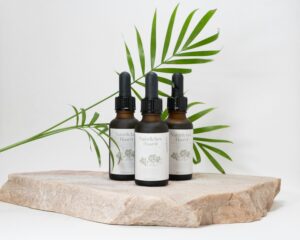Moisturizing Oils vs. Sealing Oils: Which is Best for Your Hair?
Choosing the right oils for your hair can significantly impact its health, especially when navigating the differences between moisturizing oils vs. sealing oils. Understanding these distinctions is crucial for tailoring an effective hair care routine that meets the unique needs of your hair type, particularly for those with curly hair. In this article, we will explore what moisturizing oils are, their benefits, and how to effectively incorporate them into your hair care regimen.
Understanding Moisturizing Oils
What Are Moisturizing Oils?
Moisturizing oils are natural oils that penetrate the hair shaft, providing deep hydration to the hair strands and scalp. These oils, such as coconut oil and castor oil, are renowned for their ability to moisturize the hair, making them essential for anyone looking to maintain healthy hair. Moisturizing oils work by entering the hair cuticle and reaching the inner layers, effectively combating dry hair and reducing hair breakage. Unlike sealing oils, which primarily trap moisture, moisturizing oils actively work to hydrate and nourish the hair, promoting overall hair growth and vitality.
Benefits of Moisturizing Oils for Curly Hair
For those with curly hair, the benefits of using moisturizing oils cannot be overstated. Curly hair tends to be drier due to its unique structure, which makes it harder for natural oils produced by the scalp to evenly coat and penetrate the hair strands. By incorporating moisturizing oils into your hair care routine, you can effectively moisturize your hair and enhance its elasticity. This leads to improved texture, reduced frizz, and a more defined curl pattern. Regular use of moisturizing oils can also help prevent hair breakage, ensuring that your curls remain healthy and vibrant.
How to Use Moisturizing Oils in Your Hair Care Routine
To reap the full benefits of moisturizing oils, it’s essential to know how to use them effectively. Start by applying a moisturizing oil after you wash your hair, while it is still damp, to best penetrate your hair shaft. You can also use a moisturizing oil as a pre-shampoo treatment, allowing it to soak into the hair follicles before washing your hair. Additionally, consider adding a few drops of a moisturizing oil to your styling products to enhance moisture retention throughout the day. Remember, the key is to find the right balance between moisturizing and sealing oils to achieve healthy, hydrated hair.
The Role of Sealing Oils
What Are Sealing Oils?
Sealing oils are primarily used to lock in moisture within the hair and prevent it from escaping. Unlike moisturizing oils, which penetrate the hair shaft to hydrate, sealing oils create a protective barrier on the hair strands. Common sealing oils include jojoba oil, argan oil, and grapeseed oil, all of which are effective in sealing in moisture and maintaining the health of the hair and scalp. These oils are essential for anyone with porous hair types, as they help to retain the hydration provided by moisturizing oils. By using sealing oils, you can ensure that your hair remains hydrated for longer periods, reducing the risk of dryness and hair breakage.
Benefits of Using Sealing Oils for Hair Growth
The incorporation of sealing oils into your hair care routine can significantly benefit hair growth by minimizing moisture loss. When you apply a sealing oil after using a moisturizing oil, it helps to trap the moisture and nutrients within the hair shaft, promoting healthier hair growth. Sealing oils also provide essential fatty acids that nourish the hair follicles, making them crucial for maintaining strong and resilient hair strands. Additionally, these oils can improve the overall appearance of your hair by enhancing shine and reducing frizz. Regular use of sealing oils can also protect your hair from environmental damage and heat styling, contributing to its long-term health and vitality.
How to Incorporate Sealing Oils Into Your Hair Care
Incorporating sealing oils into your hair care routine is simple yet effective. Start by applying a moisturizing oil to your damp hair after washing. Once the moisturizing oil has been absorbed, follow up with a sealing oil to lock in that moisture effectively. You can also use sealing oils as a finishing touch on dry hair to add shine and smoothness. For best results, focus on the ends of your hair, where moisture tends to escape more quickly. Additionally, when styling your hair, consider mixing a few drops of sealing oil with your styling products to enhance moisture retention throughout the day. This approach will help you achieve a balanced regimen of moisturizing and sealing, ultimately leading to healthier, more vibrant hair.
Moisturizing Oils vs. Sealing Oils: Key Differences

Photo by Taisiia Stupak on Unsplash
The Difference Between Moisturizing and Sealing Oils
The key distinction between moisturizing oils and sealing oils lies in their function and application in hair care. Moisturizing oils, such as coconut oil and castor oil, are designed to penetrate the hair shaft and hydrate the hair strands, effectively combating dry hair. They allow moisture to enter the hair cuticle, ensuring that the inner layers of the hair remain hydrated. In contrast, sealing oils create a protective layer that helps lock in this moisture, preventing it from escaping. Oils like jojoba oil and argan oil are excellent sealing oils that work to maintain moisture levels in the hair, making them vital for individuals with porous hair types. Understanding these differences helps you tailor your hair care routine to include both moisturizing and sealing oils, maximizing hydration and health.
Choosing the Right Oil for Your Hair Type
Selecting the right oil for your hair type is crucial for achieving optimal results in your hair care regimen. If you have curly hair, moisturizing oils that can penetrate the hair shaft will be particularly beneficial, as they help to hydrate and define your curls. On the other hand, individuals with straight or wavy hair may benefit from a combination of moisturizing and sealing oils to maintain balance without weighing down the hair. Additionally, consider the porosity of your hair; high-porosity hair often requires heavier sealing oils to lock in moisture, whereas low-porosity hair may respond better to lighter oils. By understanding your unique hair needs, you can effectively choose the best oils for your hair, ensuring it remains healthy and vibrant.
When to Use Moisturizing Oils vs Sealing Oils
Knowing when to use moisturizing oils vs sealing oils is essential for maintaining healthy hair. After washing your hair, it is best to apply a moisturizing oil while your hair is still damp, allowing the oil to penetrate the hair shaft and hydrate your strands effectively. Following this, you should use a sealing oil to lock in that moisture, ensuring it does not escape. This sequential application is particularly important for retaining hydration in curly hair, which is prone to dryness. Additionally, you can use a moisturizing oil during styling to enhance moisture retention or as a pre-treatment before washing. Conversely, sealing oils can be applied on dry hair to add shine and smoothness. Understanding the right timing for each type of oil in your hair care routine will help you achieve the best results for your hair health.
Developing Your Hair Care Routine

Photo by Karolina Kaboompics on Pexels
Combining Moisturizing and Sealing Oils
To develop an effective hair care routine, understanding how to combine moisturizing and sealing oils is essential. Start by selecting a high-quality moisturizing oil, such as coconut oil or castor oil, known for their ability to penetrate the hair shaft and deeply moisturize your hair. After applying the moisturizing oil, follow up with a sealing oil like jojoba or argan oil. This sealing oil will help lock in the moisture, preventing it from escaping and ensuring that your hair remains hydrated throughout the day. By establishing this two-step process, you maximize the benefits of both types of oils, leading to healthier, more resilient hair strands.
Tips for Washing Your Hair and Applying Oils
Washing your hair properly is crucial for creating an effective hair care routine. Use a gentle shampoo to cleanse your hair without stripping it of essential oils. After washing, gently towel-dry your hair to remove excess water, making it easier for the moisturizing oils to penetrate. Apply a moisturizing oil while your hair is still damp, allowing it to effectively hydrate the hair cuticle and strands. Once the moisturizing oil has absorbed, apply a sealing oil to lock in that hydration. Remember to focus on the ends of your hair, where moisture tends to escape the fastest. This method not only promotes hair growth but also reduces the risk of hair breakage, keeping your natural hair healthy.
Tracking Your Hair Journey with Oils
Tracking your hair journey with oils can help you understand what works best for your unique hair type. Consider maintaining a hair journal where you document the oils you use, the results you observe, and any changes in your hair’s texture or health. This practice will allow you to identify which moisturizing oils and sealing oils are most effective for your hair care routine. Additionally, note any specific instances of dryness or breakage, as this information can guide you in adjusting your oil usage. By being attentive to your hair’s needs, you can create a personalized regimen that enhances your hair’s health and vitality, ultimately leading to beautiful, thriving locks.
What is the difference between moisturizing oil and sealing oil?
The difference between moisturizing oil and sealing oil lies in their primary functions. Moisturizing oils are designed to hydrate and soften the hair strands, while sealing oils are meant to lock in that moisture. If you’re aiming for a healthy hair routine, understanding how these oils work together is essential for optimal hair care.
How do I moisturize my hair effectively?
To effectively moisturize your hair, begin by selecting a quality moisturizing oil, such as coconut oil or castor oil. Apply the oil generously from the roots to the tips of your hair strands, ensuring it can penetrate the hair shaft. Incorporating a consistent routine will help maintain hydration and prevent hair breakage.
What are the best oils for your hair?
The best oils for your hair depend on your hair type and specific needs. For instance, coconut oil is excellent for penetrating the hair and providing deep moisture, while castor oil is renowned for promoting hair growth. Tailoring your choice of moisturizing and sealing oils based on your unique hair care routine is key to achieving healthy hair.
How do moisturizing oils penetrate the hair?
Moisturizing oils work by penetrating the hair shaft, reaching the inner layers of the hair cuticle. This allows the oil to hydrate and nourish the hair follicles, making them more resilient. When applying oils, make sure to massage them into the scalp and through the hair strands for maximum absorption.
Can I use a sealing oil on wet hair?
Using a sealing oil on wet hair can be beneficial, but there are a few things to consider. Sealing oils, such as argan oil, jojoba oil, or coconut oil, help to lock in moisture and provide shine. When applied to damp hair, these oils can help seal in hydration from your leave-in conditioner or any other moisturizing products you’ve used.
However, it’s essential to use the right amount—too much oil can weigh your hair down or make it look greasy. It’s generally recommended to apply sealing oil to damp hair after you’ve towel-dried it to remove excess moisture. This allows the oil to create a barrier that retains the moisture in your hair without overpowering it.
If you have very fine or thin hair, you might want to focus on the ends rather than the roots to avoid making your hair look flat. Conversely, if you have thick or curly hair, applying sealing oil to the entire length can enhance definition and reduce frizz.
Always remember to experiment to find the right balance for your hair type and preferences!



